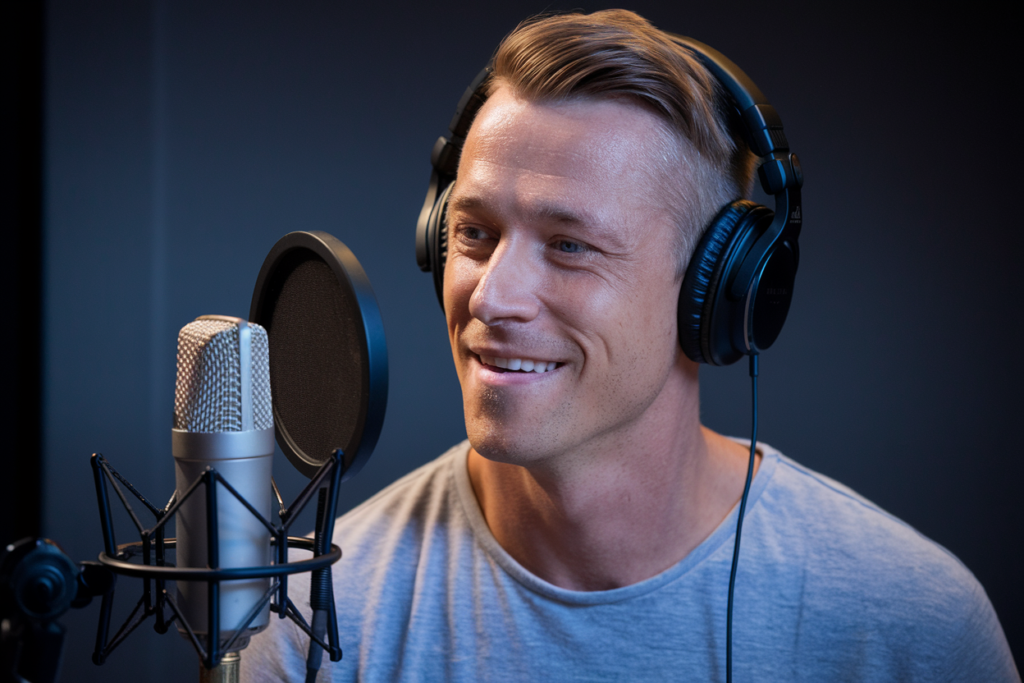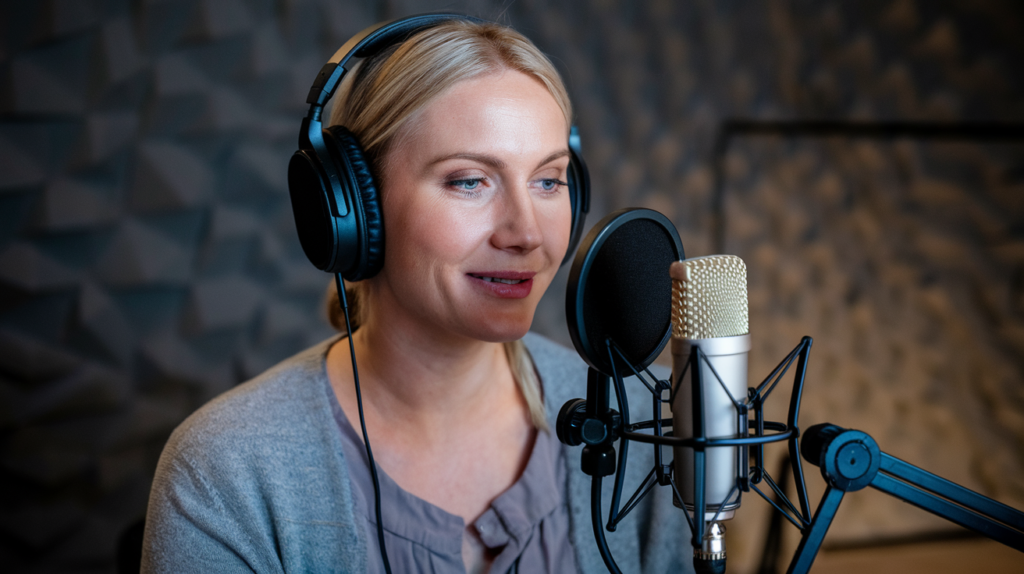Key Takeaways
- Importance of Lip Sync: Accurate lip sync is crucial in Australian English dubbing, directly impacting viewer immersion and emotional engagement with the storyline.
- Cultural Adaptation: Voice actors must adapt dialogue to include local slang, expressions, and humor to resonate with Australian audiences while preserving the original material’s intent.
- Challenges in Dubbing: Accents and dialect differences across Australia pose challenges for voice artists, requiring careful consideration to maintain authenticity and connection with viewers.
- Techniques for Quality Dubbing: Successful dubbing involves precise timing and pacing adjustments, ensuring that dialogue aligns seamlessly with characters’ mouth movements.
- Future of Dubbing Technologies: Advances in AI and real-time collaboration tools are enhancing synchronization quality and streamlining the dubbing process for better audience experiences.
Ever wondered why some dubbed shows feel off when you watch them? Lip sync in Australian English dubbing can make or break your viewing experience. When the dialogue doesn’t match the characters’ mouth movements, it pulls you right out of the story.
Overview Of Lip Sync In Australian English Dubbing
Lip sync plays a crucial role in the success of Australian English dubbing, significantly influencing how audiences perceive and engage with dubbed content. Accurate synchronization between dialogue and mouth movements enhances viewer immersion. When viewers see characters speak naturally in their native accents, it fosters a deeper connection to the story.
Mismatched lip movements can lead to distractions, pulling attention away from the narrative. This misalignment often results from poor adaptation of scripts or inadequate voiceover talent selection. Voice actors must possess not only vocal skills but also an understanding of timing and emotion to deliver lines that match visual cues seamlessly.
In Australian English dubbing, cultural nuances also come into play. Voice over artists need to adapt phrasing and expressions relevant to local audiences while maintaining fidelity to the original material. This balance ensures authenticity without compromising the source material’s intent.
Choosing skilled voice over talent who specialize in Australian dialects can vastly improve lip sync quality. These professionals understand regional slang and inflection patterns, creating a relatable experience for viewers.
Overall, achieving effective lip sync in Australian English dubbing requires collaboration among writers, directors, and voice artists. Each element contributes toward crafting an engaging viewing experience that resonates with local audiences while preserving the essence of the original production.
Importance Of Lip Sync In Dubbing
Lip sync plays a critical role in Australian English dubbing, directly influencing the viewing experience. Accurate synchronization between dialogue and mouth movements creates a seamless connection between viewers and the story.
Enhancing Audience Engagement
Engaging an audience hinges on authenticity. When lip sync aligns with spoken words, it fosters immersion that enhances emotional responses to characters. Effective voice actors understand this; they adjust their delivery to match not just the timing but also the character’s emotions. This alignment makes dialogues feel genuine, allowing you to connect deeper with the narrative.
Preserving Actor Performance
Maintaining the integrity of the original actor’s performance is vital in dubbing. Skilled voice artists replicate not just voices but also nuances like tone and inflection, ensuring that audiences perceive familiar traits from original performances. A well-synchronized dub preserves these subtleties while making local adaptations, resulting in a product that respects both cultural context and artistic intent. The collaboration among writers, directors, and talented voice over actors ensures that each performance resonates with local audiences while honoring its source material.
Techniques Used In Australian English Dubbing
Dubbing in Australian English involves several techniques that enhance the viewing experience. These methods ensure that dialogue aligns with on-screen actions, creating a more immersive environment for audiences.
Timing And Pacing Adjustments
Timing and pacing are critical in dubbing. Voice actors adjust their delivery to match the original actor’s rhythm and emotion. This adjustment helps maintain the story’s natural flow while ensuring that spoken lines fit perfectly with mouth movements. If voice artists miss this synchronization, it disrupts viewer engagement and can lead to disconnection from the narrative. Skilled professionals understand how to gauge timing effectively, using pauses and emphasis to replicate the original intent behind each scene.
Cultural Nuances In Dialogue
Cultural nuances play a significant role in effective dubbing. Adaptation goes beyond mere translation; it requires voice actors to incorporate local expressions, idioms, and humor relevant to Australian audiences. This approach ensures authenticity in character portrayal while respecting cultural context. When voiceover talent embraces these subtleties, they create dialogues that resonate deeply with viewers. Engaging local audiences involves capturing not just words but also feelings—an essential component of any successful dubbing project.
By focusing on timing adjustments and cultural considerations, you can achieve high-quality dubbing that enhances viewer connection and enjoyment.
Challenges Faced In Australian English Dubbing
Dubbing in Australian English presents unique challenges that can impact the overall quality and authenticity of the final product. Understanding these difficulties helps ensure a more engaging viewing experience.
Differences In Accent And Dialect
Accents and dialects vary significantly across Australia, leading to potential mismatches between character voices and local audiences. Voice artists must navigate these differences carefully. For instance, a voice actor from Sydney may sound different than one from Melbourne or Brisbane. This diversity can create obstacles when attempting to match the original character’s tone with an appropriate local accent. Moreover, regional expressions and colloquialisms add another layer of complexity. Voiceover talent needs to adapt scripts so they resonate with viewers while still honoring the source material’s intent.
Synchronization Issues With Visuals
Synchronization issues often arise when aligning dialogue delivery with on-screen visuals, particularly in animated content or live-action films dubbed into Australian English. Mismatched lip movements can disrupt immersion, making it harder for you to connect with characters. Voice actors must pay close attention to timing; their speech patterns should match mouth movements closely for effective delivery. If voiceovers are either too fast or too slow compared to what you see on screen, it detracts from your enjoyment and emotional engagement with the story.
By addressing these challenges directly through skilled adaptation and precise synchronization techniques, dubbing projects can enhance viewer experiences while maintaining fidelity to original performances.
Future Trends In Dubbing Technologies
Dubbing technologies are evolving rapidly, shaping the future of voiceover work and enhancing viewer experiences. Innovations in artificial intelligence (AI) and machine learning are making significant strides in streamlining dubbing processes. These advancements enable automated lip sync adjustments, allowing for quicker turnaround times without sacrificing quality.
Voiceover artists increasingly use software that analyzes audio and visual components to create more accurate synchronizations. This technology helps identify discrepancies between spoken words and mouth movements, providing invaluable insights for voice actors during recordings. As a result, you can expect smoother dialogue delivery that resonates better with local audiences.
Another trend involves real-time collaboration tools. These platforms allow writers, directors, and voice talent to work together seamlessly, regardless of their physical locations. By facilitating instant feedback on performances, these tools enhance the overall quality of projects while fostering creative partnerships among team members.
Cultural adaptation remains vital as well. Voice artists now incorporate advanced linguistic models that capture local slang or idioms more effectively than ever before. With a focus on authenticity, this approach ensures that humor or emotional nuances connect with viewers on a deeper level.
Furthermore, the rise of immersive technologies such as virtual reality (VR) is changing how audiences interact with dubbed content. As VR gains popularity, the demand for precise lip syncing increases; viewers expect an experience where characters feel alive and relatable within these digital environments.
As trends continue to shape the dubbing landscape, staying ahead means embracing new technologies while preserving the artistry involved in voiceover work. The future promises exciting developments for voice actors and clients alike—ensuring engaging narratives resonate across cultures around the world.
Conclusion
Mastering lip sync in Australian English dubbing is essential for creating an authentic viewing experience. When dialogue aligns seamlessly with mouth movements it enhances viewer immersion and emotional connection to the characters. As you engage with dubbed content it’s crucial to recognize the artistry behind voice acting and the cultural nuances that shape performances.
Embracing advancements in technology like AI will help streamline processes while preserving the integrity of original performances. Staying attuned to local expressions ensures that adaptations resonate deeply with audiences. With continued collaboration among writers directors and voice actors the future of Australian English dubbing looks promising, paving the way for narratives that truly captivate viewers.
Frequently Asked Questions
What is the impact of lip sync on viewer experience in dubbing?
Lip sync significantly affects the viewing experience by maintaining immersion. When dialogue and mouth movements are mismatched, it disrupts audience engagement and can detract from enjoyment. Accurate synchronization fosters a deeper connection to the narrative, enhancing emotional responses to characters.
Why is accurate synchronization important in Australian English dubbing?
Accurate synchronization ensures that viewers feel connected to the story. It enhances authenticity, allowing voice actors to replicate timing and emotions effectively. This alignment helps preserve the original actor’s performance while making dialogues resonate with local audiences.
What challenges do voice artists face in Australian English dubbing?
Voice artists contend with various accents and dialects across Australia, which can create mismatches between character voices and local audiences. Additionally, synchronizing dialogue delivery with visuals presents challenges, particularly in animated content or live-action films.
How do cultural nuances affect dubbing in Australia?
Cultural nuances play a vital role as voice actors adapt phrases, idioms, and humor relevant to Australian audiences. This adaptation helps maintain authenticity while ensuring that dialogues align with local expectations without losing fidelity to the original material.
What future trends are shaping dubbing technologies?
Innovations like AI and machine learning are streamlining dubbing processes by enabling automated lip sync adjustments for faster turnaround times. Real-time collaboration tools also enhance project quality through instant feedback among writers, directors, and voice talent.
How does timing adjustment enhance dubbed shows?
Timing adjustments allow voice actors to align their delivery with the original actor’s rhythm and emotion. This technique makes dialogues appear more genuine and helps maintain immersion for viewers by creating a seamless connection between audio and visual elements.
What skills should voice actors possess for effective dubbing?
Voice actors need strong vocal skills alongside an understanding of timing and emotion for effective dubbing. They must also be adept at replicating tone, inflection, and cultural expressions relevant to local audiences while preserving artistic intent from the source material.







